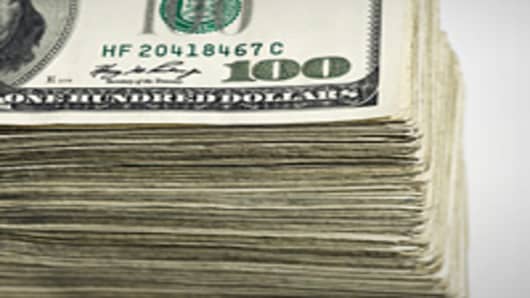CD rates are at record lows -- at least since Bankrate began tracking rates in 1983. But building a CD ladder can still make sense in some cases. For investors such as retirees and conservative pre-retirees who need safe, income-producing investments, a CD ladder is a useful tool in their portfolio.
CD ladders maximize returns while they minimize risk. Investments in a CD ladder are constantly cycling out, so investors have more liquidity to take advantage of rising interest rates.
No one knows what will happen with interest rates or when it will happen, but sitting on the sidelines until something better comes along means you're missing out on returns right now.
For instance, investors who drastically shortened their ladders in anticipation of inflation earlier this year got burned when rates fell further. And they missed out on the relatively higher yields available at longer maturities.
"People were keeping rates very short and, in fact, their income stream has gone way, way down," says Herbert Hopwood, CFP and president of Hopwood Financial Services in Great Falls, Va. "The reason you want to do a bond or CD ladder is because you just don't know."
What to do now
A CD ladder being constructed right now should aim for short-term to midterm maturities, around five to seven years. Though the yields on many short-term CDs barely squeak by those of money market accounts, some not-too-horrible yields are available. Use Bankrate's rate tables to find high-yield CDs available locally or nationwide.
In a normal interest rate environment, investors are compensated for tying up money for a longer period of time.
In today's atmosphere, the rewards of buying long-term CDs are vastly exceeded by the risk of having a long-term stinker when rates finally do rise.
For investors focused only on safety and FDIC insurance, Kimberly Foss, CFP and president of Empyrion Wealth Management, recommends sticking to the short end of the yield curve. "If you're only going for a safety play, you wouldn't want to go out further than 24 months," she says.
For a little more bang for your buck, she suggests putting 50 percent of CD funds into maturities between 12 and 24 months; 25 percent into 24- and 48-month CDs and the final 25 percent laddered out to 60 months.
Similarly, Hopwood says the CD ladders he's recently put together have been five years and under.
Donald Cummings Jr., managing partner at Blue Haven Capital in Geneva, Ill., recommends building CD ladders out as far as eight years.
"Effective laddering is very dependent upon the shape of the (yield) curve. Right now, I would say laddering to about three years to eight years or so captures the very steepest part of the curve," he says.
Use Bankrate's CD calculator to determine the best CD ladder for you.
How to supplement
Supplementing the CD ladder
Some CD products out there can enhance CD rates, or allow an easy out when rates do go up -- for instance, no-penalty, or liquid, CDs. Though they may have a lower yield than comparable CDs, the chance to avoid an early withdrawal penalty may be worth it for some investors.
Bump-up CDs allow you to raise your rate if interest rates rise. However, the cost of flexibility may eat into the yield a bit. It does depend on where you shop, though. Internet banks sometimes have rates on bump-up CDs that are competitive with other high-yield products.
One caveat: "You don't want to put all your money in (bump-up CDs) because they will call it from you if rates go down," says Hopwood.
When a CD is called, the bank redeems the investment plus any interest earned up to that date.
The Federal Reserve's recent enactment of a second round of quantitative easing -- the effect of which will be lower interest rates -- may be something to be wary of.
Because CD rates are already so low, Foss says that the most pressing concern for fixed-income investors is the eventuality of rising interest rates and inflation.
Though it's low now, if inflation increases, it will quickly outstrip the gains earned by low-yielding CDs and eat away at purchasing power.
To combat that, fixed-income investors might consider complementing their CD ladder with a very safe bond fund.
"One might consider putting between 50 and 75 percent of the portfolio in CDs and ladder them out. Then supplementing with a very good high-yield, short-term corporate and Treasury bond fund," Foss says.
That will help investors "maximize returns and stay above the yield curve and inflation," she says.
As interest rates rise, investors could consider lengthening their ladder as rates dictate. Until that happens, it's a waiting game as fixed-income yields continue to stagnate.


